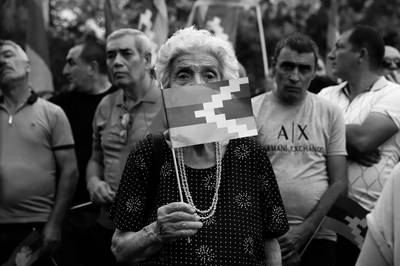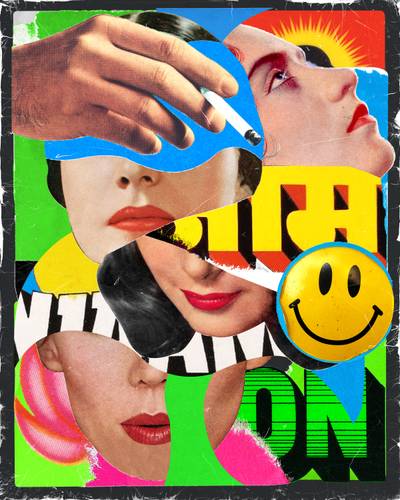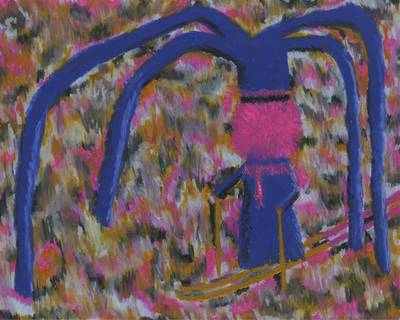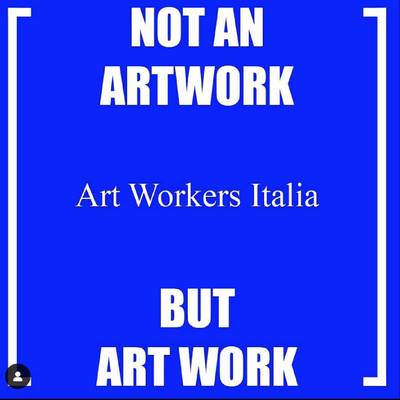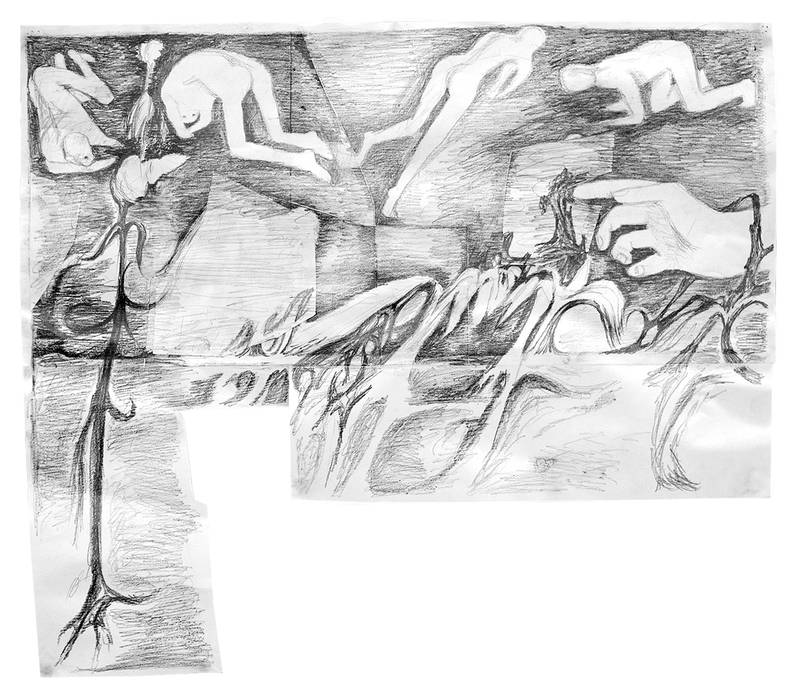

Anastasia Sviridenko, It could be a garden and gardeners, paper, pencil, 2023
Adel Kim (b.1987) is a curator, manager, and researcher. She received an MA in Art Studies from Hongik University (2018) and MA in Cultural Management from Manchester University and Moscow School of Social and Economic Studies (2020). Currently, she is a researcher in the Reside / Sustain: Finnish & Russian experiences / initiatives / practices project.
I cherish friendships and love my friends; I tend to rely on them. We work and apply for grants together, and I consider them my safe space and comfort zone. My identity is defined through communication with them. At the same time, I cannot help but wonder how the word “friendship” in art related topics has recently become so ubiquitous, generally gaining an unconditionally positive connotation—in the same manner as “care,” “hospitality,” “community,” you name it. Romantic love has been investigated and deromanticized quite successfully; surprisingly, the friendship zone remains relatively uncontroversial. Since I like putting things under a microscope, assuming that their “goodness” is caused by a lack of analysis, in this text, I want to take a critical approach—to scratch where it itches.
This urge has grown from personal experience and the uncomfortable questions that followed. When asked about their choice to work with a particular artist, why would a curator answer “Because we are friends” without hesitation? Why is it not problematic for a networking workshop to mix friendships and professional connections, emphasising the benefits of helping friends since they will eventually feel obliged to help in return? How did such a neoliberal manipulative trick that openly instrumentalizes intimacy become acceptable? And on the other hand, why does nepotism evoke shitstorms in show business but pass smoothly in the arts? Is “friendly, warm hearted” corruption and favouritism legitimised? Am I abusing my position of power by preferring to work with friends? And how does the professional environment change if a friendship ends abruptly and unpleasantly?
When it comes to institutions or large scale, well-funded, prestigious art shows, there normally exist standards for resolving conflicts of interest. Mixing up the personal and the professional instigates discussions and criticism: the cases of Adam Szymczyk and Christine Macel, who included their partners’ works in documenta 14 and the main exhibition of the 57th Venice Biennial, respectively, although forgotten, remain unresolved. Neither has ever reached a satisfying conclusion within the public discussion1. Codes of conduct, proximity pledges, and basic ethical principles for art critics, curators, and dealers, prove that the art sector is worried that personal connections and preferences could affect artistic values (and prices).
However, in a less institutionalised artistic environment, friendship is perceived as a priori positive. Not only is it a legitimate reason for working together, but it is also a core element in constructing communities, networks, and self-organized mutual support. It plays a crucial role for marginalised groups when official support structures are either inefficient or do not exist. It helps in the educational process, in learning criticality in relation to each other2. Finally, friendship helps make human life longer, safer, and happier.
This sounds quite reasonable: in a professional environment with such unequal points of entry, people of less privilege choose to support each other, resisting the unjust rules of the system. As S. Nicole Lane argued: “In the elite art world, nepotism matters. […] For DIY shows, giving friends a platform, fleshing out their CV, and supporting one another is the key to an idealistic and strong community […]”3. I cannot agree more with her. But from what point onwards does the art world become the elite? And when does the support of close ones turn into the discrimination of others who are not from the same circle? The boundaries are blurred. As I observe it, the criteria must lie around notions of power, resources, and decision making, as well as profit and market. But honestly, don’t most of us, at some point, have these, to some extent? As O.K. Fox and Lucia Love mention in one of the episodes of their podcast, Art and Labor, it’s possible for a representative of a marginalised group to receive a project grant and then use it to financially support their closest circle4. Aren’t we applying double standards to similar human beings, assuming there are “their corrupted” and “our pure” types of friendship?
Making Friends Within the Field
The problem with nepotism (which, despite emerging from the Latin for “nephew,” refers to any kind of personal ties causing advantages or privileges and includes friendship) is not new. Frankly, it is hard not to work with friends. The specific nature of the art world, which partially makes work in the field so appealing, is this charming blend of “work-life”. Often, one’s close circles are from the same professional community bubble. And when there are no clear boundaries, grey zones occur.
The classical attitude towards friendship in the arts ignores these entanglements. In his text for Frieze Magazine, Jan Verwoert asked: “How do you draw the line between colleagues and friends? Why even categorise?“. He was optimistic about such fusion: “Creating the structures that will support you spiritually and economically through building communities, alliances, friendships—anything that is more than just a network’—is what the contract with your own generation is about.” 5 Many, including curators as influential as Francesco Bonami, argue, that it doesn’t matter whether there is a conflict of interest or not, as long as it’s interesting, or good, art6. They seem to think of themselves as universal knowledge bearers “above the fray”, not affected by any particular context, and directed only by the “truth”.
Meanwhile, it’s proven that trusting connections is one of the key factors in the development of an artistic career. Studies find that “artists with a large and diverse network of contacts were most likely to be famous, regardless of how creative their art was." 7 Historically, it is also clear that belonging to a potentially powerful group of artists is a working strategy. In the essay Who Has the Power (1981), Jeffrey Deitch investigates the development of minimalism: “To those looking in from the outside, the minimalist-conceptualist pantheon must have appeared to be a power-hungry cabal, sewing up the art scene in one region after another. Yet […] there was no master plan. […] The international dominance of minimalism somehow just developed out of a combination of its own energy, and the receptivity of curators and other tastemakers to the advancement of the modernist tradition.” 8 He concludes that for an emerging artist, the best strategy is to look around for “the clique that seems to have the most potential” and become a part of it.
Recently, art tied to friendship has received more detailed and inquisitive inquiries. For some, making practice through friendship becomes a way to escape an institutionalised environment: Curator Zoe Butt describes her experience of leaving the Australian government-supported arts infrastructure for the “ideologically monitored, commercially hoodwinked terrain of China and Vietnam”. Through this experience, she found out about the supportive and creative power of significant friendships in sustaining artistic development and providing political autonomy. At the same time, close and interested human relationships add depth to the attention given to artists, as she is tired of superficial curatorial hopping9. She paved her way in the arts using friendship as a method, saying: “I believe my key task is to sustain critically thinking creative communities of friendship”.
Art critic Isabelle Graw, in her recently published book On the Benefits of Friendship, refers to the Aristotelian division of friendship types—instrumental/useful, pleasant, and perfect/true—and notices that instrumental friendships are endemic within the field of art, and the border between true and useful friendship is fluid10. However, she wonders “if true friendship, in the Aristotelian sense, where the other is valued for “their own sake," is possible at all among art-world friends," because the very structure of art business, that she describes is conducted in the mode of friendship11. She also admits that the ending of instrumentalized friendships is usually imminent, and these friendships cannot withstand difficulties. Written in the format of a diary, this book chronologically unfolds her thoughts on the subject as well as on related life events. It is heartbreaking how throughout the text she touches upon questions and hardships of friendship, along with their fluctuant boundaries between collaborators and competitors12, which later in the text is followed by a real act of professional betrayal by part of her close circle, proving, in practice, the fragility between personal intimacies and the professional ambitions of actors in the field.
"Institutionalisation of Friendship”
One of the reasons I am triggered by the bloom of this friendship discourse in the arts is due to my background. I received my professional training in non-European contexts: in South Korea, there is a sort of widespread nepotism related to educational background, for instance, among alumni of the same university (clearly, the notion of friendship in local understanding is more like that of a peer, “a person from the same group of people” etc.). Recently, it has become obligatory to remove university information from your CV when applying for a job. From my internship experience, a residency manager told me “not to make friends” with the artists, as it could lead to their unequal treatment (I did, of course, hang out with them secretly). However, these experiences made me quite sensitive to the question—maybe because I value equity over personal preferences.
But the situation in Russia, where I spent years working, was much more interesting. Although the ethical code in contemporary art has been discussed in abundance, a focus on the inner market and a lack of professional education in contemporary art and management have never been established, due to many reasons, including, I believe, to a modest number of international partnerships (which has decreased dramatically since last year) As in the political sphere, the management at the very top, along with the administration, are highly corrupted by different personal relationships (I have probably heard that many current heads of state corporations are Putin’s friends, and what about the rumour of several regional governors being his former bodyguards?). The rules aren’t working, and, nepotism was and still is a big and unquestioned issue.
A significant contribution was made by the concept of "institutionalisation of friendship” introduced by Viktor Misiano, one of the best-known curators of the first post-Soviet generation13. In a text with the same title from 1995, on the example of friendship between Lyublana and Moscow artists and their joint “Transnacionala” project, he observes friendship as a perfect engine to activate artistic practice. He asserts the prevalence of the “human dimension” over a professional one, as friendship is not a creative partnership but an “ethical form of eros.” Misiano declines any “Western curatorial routine” that would include values such as political correctness, gender, ethnical, age balance, which are not necessarily crucial in friendship.
Misiano calls this new modus operandi based on friendship the “confidential project.” To him, the “confidential project” is neither spectacular nor hierarchic; it doesn’t look for truth but can tolerate diversity of opinions. Friendship is the most non-institutional and personalised form of social communication (even love is institutionalised by marriage). Thus, friendship is ideologically pure and resistant, and therefore, it gains control in situations of institutional, ideological, and moral vacuum, which was the case in that given time and place.
However, something went wrong with this project. In his interview from the late 2000s, some bitter lessons of life seem to echo in his words: “To a curator, not good artists but rather good people are needed. However, from my point of view, a good artist is always a good person. And if he, pardon me, has shitted his pants [has become an unpleasant person—A.K.], (it is also) most likely that he is not interesting as an artist, either” 14. This statement, reminiscent of an inversion of Bonami’s statement, could even sound cute in its naivety and partiality if it had not originated from one of the top curators in the country. But the position is clear and, in fact, the same: if I don’t like someone as a person, they don’t deserve attention as an artist.
Years later, in the middle of the 2010s, Misiano himself criticises his own concept15. The euphoria and freedom of the 90s were gone, and the curator admitted that friendship had been a phenomenon of the 90s, when interpersonal connections compensated for the lack of institutional infrastructure. Misiano marks this confidential project phenomenon as intrinsic to times of transition, but this was not the case for decades later on.
However, the consequences of this legitimization of a personalised approach are ubiquitous in the context of Russian art. It does not raise questions when institutional decisions are made based on personal relations, promoting opportunism and nepotism. I do not, of course, blame that one text or one curator for this whole situation. (Although later in his book Five lectures on curating (2015), the first and original copy in the Russian language dedicated to curating and a “holy bible” for a young generation of curators, he explains again the importance of personal relationships and openly legitimises professional opportunism, without mentioning basic knowledge on art history, theory, or ethics.) The reason the Russian art scene is highly nepotistic and unjust is not due to the text, but to the system, a lack of codes and regulations, professional education in contemporary practices and to any support from the state.
As I have evidenced so many cases of favouritism, nepotism, and conflict of interest blooming in the Russian art world, the mention of friendship makes me wince. During the period when I was working in Russia, I was asked by a member of the local writers’ community if I was the daughter of a famous local poet because we shared the same surname: It was kind of hard to believe that I, as a stranger, would be allowed to work in the position I held. In other places, the top management would have easily employed their friends to do some contract-based work at an overpriced rate. While serving, this person would have significantly added to the regular employees’ workload. The same artists would travel from one residency to another because of the curator’s friendship ties with both. These sorts of movements were never stated publicly. Although silenced publicly, they were visible and very normalised for those involved.
When Meanings Vanish
Another facet that disturbs me is how a particular term becomes overused, which ultimately devalues its original meaning. A very hot example here would be the term ‘care’. Trending for the past few years, care is understood in very broad contexts and is applicable to so many issues, including but not limited to the pandemic, professional ethics, accessibility standards, gardening, climate change, consumerism, or contemporary art. Therefore, the seemingly single-topic subject falls apart into separate pieces and is sometimes even influenced by polar ideologies.
Care is in the titles of so many exhibitions, collateral programmes, open calls, etc. However, how is care implemented and practiced within them? By participating in or visiting an exhibition on care, do we actually experience more care? It looks like many agree, more or less, reposting that meme with the two tables16, that institutionalisation is not helping to implement care. Often, exhibition design and format themselves do not adapt accordingly and fail to embody propositions of the curatorial concept17.
Just like friendship, care is a methodology for some feminist and postcolonialist artists and theorists. iLiana Fokianaki mentions: “Feminist theorists and activists have focused in recent decades on the idea of care as a collective responsibility and collective act, performed and embodied by a community” 18. However, in one of her online talks, Fokianaki mentions how Institutions tend to fail to participate in the care they proclaim19. Indeed, care is inter-human and personalised; when it comes to art institutions, there is little possibility to put it into practice, as there are no pre-prepared structures for it. When forced to fit into organisational boundaries and structures, care loses its radicality and personal dimension.
I see care failing in the arts when its implementation is delegated. Thus, exploitation, in the name of some greater good, becomes possible. An eloquent case study was made by Eleonora Belfiore, who investigated socially engaged arts projects, focusing on people “from disadvantaged backgrounds, displaced, vulnerable or at risk of various forms of social exclusion” as core beneficiaries20. Starting her initial research on the impact of such programmes, she later turns her attention to the systematic and embedded exploitation of artists as the ones who actualize these projects into practice. The field is chronically underfunded; however, artists, pursuing their mission, are willing to carry out their duties without pay, specialist training or support, which allows funders to neglect meaningful care. Artists work significantly more hours than they are paid for and face personal and psychological troubles as well as ethical one on one dilemmas. Belfiore questions the resourcing and sustainability of such projects that are made with a lack of real care from the organisers and by the hands of artists already overloaded with responsibilities. She asks why institutions are not “simply passing on the burden of the actual practice of care to the artists and practitioners who are charged with delivering the project," stating a moral failure in art funding policy.
In Living a Feminist Life, Sara Ahmed mentions that a resolution to transform could prevent or replace the actual implementation of the transformation: institutions often accept a non-discrimination policy document, although it is the last stage in the process; none of the statements are turned into action21. It is not too hard for me to imagine how the notion of friendship, as soon as it becomes powerful and used frequently enough, is adopted by art institutions, used, abused, and thrown away for another fresher, trendy concept. This strategy has already been adopted by commercial strategies, playing with the “sharing economy” within social relationships and hoping brands will play a role in cementing friendships22. How many environmental exhibitions have there been that didn’t result in any structural or systemic changes? Important, deep questions around climate change, indigenous knowledge, and spirituality are very quick to turn into trendy institutional checkboxes. Maybe we can keep the most precious things to ourselves?
Equity or gatekeeping?
Finally, my third concern is about the ambiguous nature of friendship: although it is based on mutual support and empowerment for some, it naturally sets the boundaries for others, becoming inclusive and exclusive simultaneously. Let’s not forget that the Aristotelian notion of friendship refers only to free men; women and enslaved people were not taken into account. This inclusion/exclusion divide affects our professional attitudes and perceptions. We are most likely to be present at our friends’ exhibition openings. Just as we don’t usually criticise friends (although rarely do we criticise at all), friendship seals our mouths shut. And then, haven’t you heard of situations where one loses a friend over an attempt to work together, and the two ignore and exclude each other? Friendship, although neither romantic nor exclusive, can have its dark and ugly sides and possibly evoke emotions like envy, rage, and bitterness, resulting in betrayals, sabotage, and/or power games. Why would we not sometimes talk about how cruel and full of drama friendships can be?
Sociologist Eva Illouz calls friendship a form of social capital: it is (still) unlike romantic love; the more friends you have, the better your social status is23. Friendship networks grow in educational or work environments that are not equally accessible for everyone. Moreover, there could be other obstacles: such as recently displaced people, or those who don’t speak local languages on the same level as others, those who are introverted or traumatized; in these cases, it is highly possible to have a humble number of friends. Last but not least, if you are a picky, grumpy, unpleasant person with no friends, do you deserve fewer opportunities and less than equal treatment?
I recall a question posed by artist Vienne Chan from the Institute of Care project in the discussion dedicated to the recent opening of the SYSTEMS exhibition. The Institute deals with alternatives to care delivery in collaboration with care receivers and caregivers. Vienna asked, “If I am an asshole, do I deserve less care?” Indeed, and if I am an asshole, do I not deserve to be exhibited, supported, or given professional opportunities? Aren’t we biassed about unfriendly people, in addition to other biases? And if so, do we practice equity the way we want? Martha Rosler asked, Why are people being so (annoyingly) nice?24 Isn’t it because being not nice will most likely cost some of your social capital?
I invite us to rethink the way we work and make decisions, not only in the “elite art world”; but to be critical of ourselves and to keep in mind that friendship is not necessarily as bright, non-problematic and sweet as it is depicted. Knowing how personal preferences and intimate relations affect who receives support and opportunities, we can make the workflow and decisions more transparent. It would not be very original to say, “Work with people who are not your friends," but maybe we can think of something more paradoxical. How about working with those with whom you disagree? How about attempting to understand someone who doesn’t share your point of view or is simply not in your circle? Can we look for people who are seldom included? I wonder what tensions, encounters, and discoveries this could lead to.
